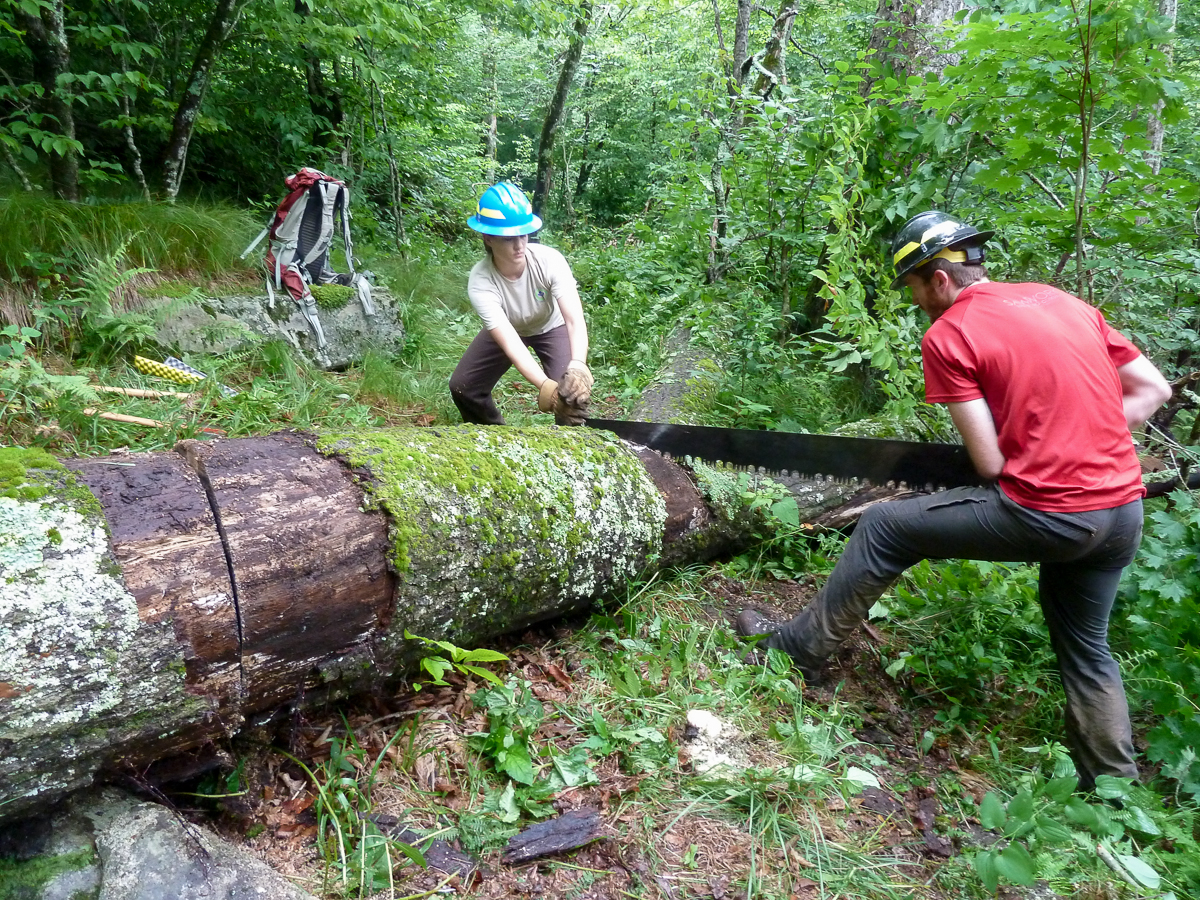Hiking with a 35-pound backpack is hard enough, but add another 15 pounds and the pack seems a lot heavier.
For members of Southern Appalachian Wilderness Stewards, that is the norm. After hiking to wilderness areas needing restoration, they work with such tools as crosscut saws, small folding saws, loppers, mattocks and pulaskis.
A project of The Wilderness Society, a nationwide conservation organization, SAWS currently works in Tennessee, Georgia and the Carolinas but is expected soon to include wilderness areas in two national forests in Virginia.
"That means we will work across 45 different areas," said Bill Hodge, the founder and director of SAWS, which has about 100 workers doing restoration in trails and campsites in 22 wilderness areas of the Cherokee, Chattahoochee, Nantahala and Pisgah national forests.
"Each year we do an evaluation and select the projects that we can handle," Hodge said, noting that the National Forest Foundation provides a major part of the SAWS funds.
This summer there were more than 20 paid seasonal workers who served as leads for the volunteer trail groups. In all the workers gave about 3,000 hours in the four national forests.
The United States has 618 million acres of what is considered "wildlands" in national parks, national forests and other recreational areas, but only 110 million acres have been declared wilderness areas by Congress. According to Public Law 88-577, a wilderness area is defined, in part, as "an area where the earth and its community of life are untrammeled by man, where man himself is a visitor who does not remain."
Hodge, who lives near Coker Creek in Tennessee, is an employee of The Wilderness Society.
"I started the SAWS program in November 2010 after working as a field organizer for the TN Wild Campaign," he said. "From there I found that there were a lot interested. I saw what I felt was a real need."
A SAWS crew usually camps overnight and spends five days working on a trail. However, due to the length of some trails and their remote location, nine days sometimes are required.
Hodge reported that since 2010 he has spent about 100 days a year working in wilderness areas, with usually 30 or so nights car camping or backpacking.
According to the SAWS website (www.trailcrews.org), the organization's goals include year-round trail restoration, training through the Wilderness Skills Institute in the Pisgah National Forest, data gathering and analysis of "relevant wilderness impacts," wilderness ranger and citizen scientist programs and economic development through the trail restoration and employment monitoring.
With few exceptions, workers inside a wilderness area are not allowed to use power tools, and that is part of the lure for Brenna Irrer, the SAWS youth coordinator. She never had used a crosscut saw before joining the organization in March.
"There is nothing that compares with getting through a big tree," said the 24-year-old. "It takes a lot more planning. When you use a crosscut saw, you've really got to pick the right spot to cut. Using a crosscut saw just feels good."
She said Hodge told her when she joined that "the crosscut saw is the gateway drug to wilderness."
Irrer visits college campuses in the Southeast in trying to recruit students for SAWS. She noted that high school recruitment has encountered legal problems because of age restrictions.
Contact Gary Petty at sports@timesfreepress.com
